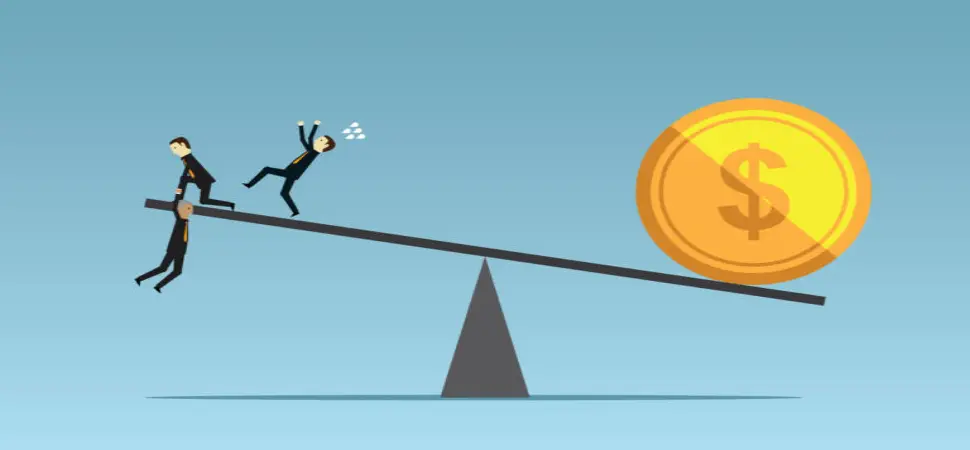21.09.2024
Евгений Лебедев
276

What is leverage?
In financial terms, leverage is a mechanism that allows you to increase the investment opportunities of a trader. Whether you are buying or selling, leverage allows you to make larger trades that may be worth more than you have in your trading account. In other words, leverage allows you to multiply the size of your position several times the amount of your initial deposit. For example, with a deposit of 20%, you can open a position in Siemens shares worth €1000 for only €200. Your broker will deposit the remaining €800, allowing you to open a position five times larger than your initial deposit. This way of trading allows for a higher return on deposit, but it also increases the risk as the trader loses the full amount of the deposit in the event of a loss.How does leverage work?
As we have found out, when trading financial products using leverage, there is a ‘debtor-creditor’ situation, where the investor is the debtor and the broker is the creditor. For each of its assets, the broker specifies the amount of money needed to cover the risk of the position (margin). Thus, leverage is implicit. A margin requirement of 1 to 50 means, for example, that to open a €50 position you will need €1 of available margin. In this example, the margin requirement is 1/50 and the maximum leverage allowed is 50. In practical terms, leverage of 50 means that the trader's profits and losses will be multiplied by 50. Thanks to leverage, instead of losing or gaining €1 on his position for a given price change, the trader will now lose or gain €50 for the same change.
Let's take another example: Suppose you want to buy 1,000 shares of a company at €1 apiece. To open a traditional position with a broker, you would have to pay 1,000 x €1 to get a risk of €1,000 (excluding additional fees and commissions). If the share price rises by 20 cents, your shares will now be worth €1.20 apiece. If you close your position, you will make a profit of €200 on your initial investment of €1,000. If the market had moved in the opposite direction and the share price fell by 20 cents, you would have lost €200, or one fifth of your original investment.
In comparison, you could open this position with a leveraged broker, asking for a 20 cent hedge on these shares. In this case, you would only need to lock in 20 per cent of your €1,000, i.e. €200, to open the position. As a rule of thumb, the most experienced traders allow themselves significant leverage on short-term trades. Conversely, as their investment horizon lengthens, their leverage tends towards 0. Most financial derivatives have leverage. However, two major instruments are the prime representatives of this mechanism. These are index futures and CFDs. To allow their clients to take advantage of fluctuations in the currency market, Forex brokers offer high levels of leverage, which should be handled with care.
Leverage Risk Management
Leverage significantly increases the amounts of potential profits, but it is worth being extremely cautious here. Whilst increasing the level of profit, such trading also significantly increases the level of risk and can lead to large losses of finances. For this reason, especially when using leverage in the forex market, it is important to establish some risk management rules. Here are some of the basic orders that can improve leverage management:Stop Loss Orders
Stop Loss orders are designed to limit a trader's losses when the market moves against them. Traders can use this order to determine the price level above which they want their position to be automatically closed.Trailing Stop Loss Orders
Trailing Stop Loss orders are also designed to limit a trader's losses when the market moves against him. But that's not all: when the market moves in their favour, trailing stop loss orders also provide a portion of the trader's profits by following a favourable price movement.Guaranteed Stop Loss Orders
Finally, guaranteed stop loss orders (GSLOs) work in the same way as stop loss orders, the only difference being that they set an absolute limit to your potential losses on a given trade, guaranteeing that your trade will close at the specified price. However, in order to take advantage of this additional guarantee, the trader must pay a commission, which is specified in the order and paid when the order is executed.
To avoid the rookie mistakes associated with margin trading, understanding how leverage works in the forex market is essential. Instead of trying to trade intuitively, leveraged traders put a lot of effort into analysis, be it fundamental analysis, chart analysis, technical analysis or behavioural analysis.
Conclusion
While many people use leverage to increase their potential profits, sometimes without realising that in doing so they are also increasing their potential losses, independent traders prefer to use leverage in other ways. For example, proprietary traders prefer to use leverage to adjust the size of their positions to market volatility. Flow traders may prefer to use it to limit the amount of capital required to open and maintain a hedging position. Like many other financial instruments, leverage can be particularly useful when used correctly to ensure that this useful tool in skilful hands does not become a source of unnecessary risk.
